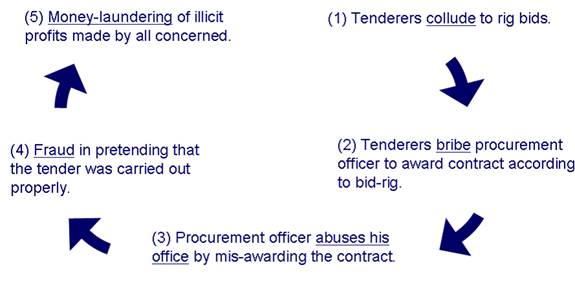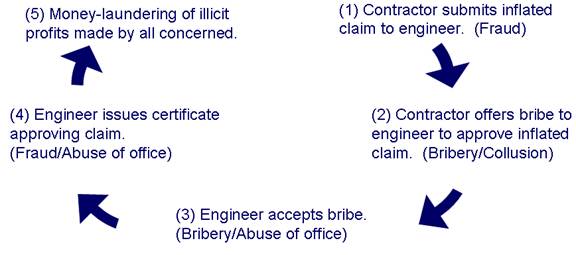The relationship between different offences
One action may often result in more than one offence being committed. For example:
-
Bribery normally involves a degree of fraud. A bribe paid to win a project will normally be concealed by some fraudulent act with the aim that the project appears from the outside to have been won on a genuine arms-length basis.
-
Fraud does not necessarily involve bribery. However, many acts of fraud may need an act of bribery in order to complete the fraud. For example, a project owner may wish fraudulently to withhold payment from a contractor and may bribe the certifier to certify falsely that liquidated damages or costs for rectification of defects are payable by the contractor.
-
Collusion, embezzlement and abuse of power will normally involve fraud, as false documentation will be drawn up, or false statements made, so as to conceal the true nature of the transaction.
The following two charts illustrate this overlap.


